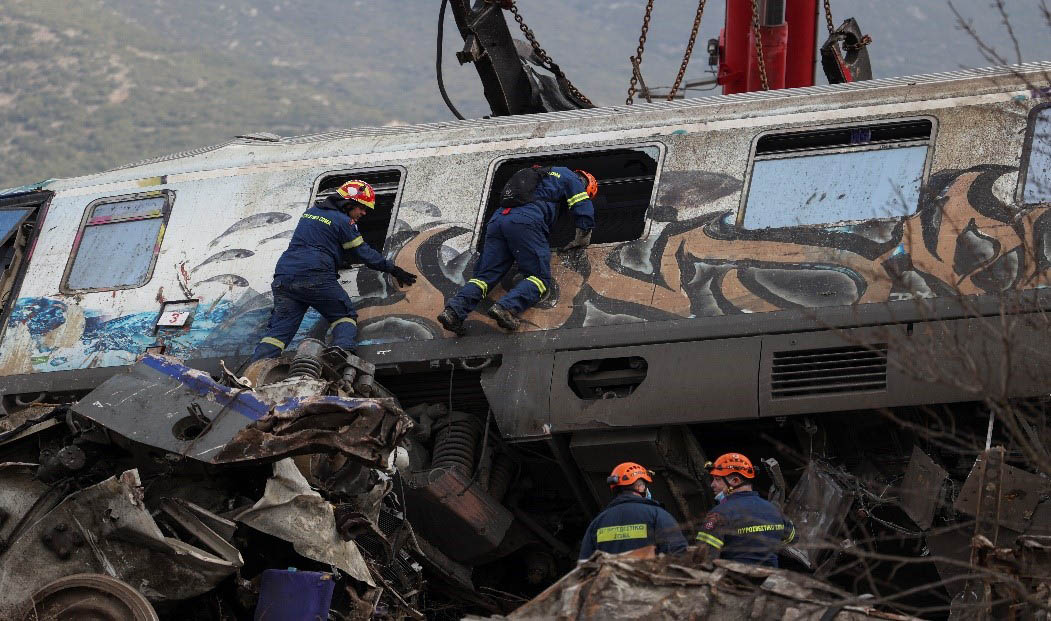ATHENS (Reuters) – Greek Prime Minister Kyriakos Mitsotakis called it an unspeakable tragedy but questions are being asked whether the fatal collision of passenger and freight trains on Tuesday night could have been prevented.
Nearly 24 hours after the two trains collided in central Greece, killing at least 36 people and injuring dozens, survivors and relatives of victims were still in the dark on who was responsible for Greece’s deadliest train crash in living memory.
Carriages travelling in opposite directions on the same track smashed into one another some 220 miles north of the capital Athens, at speeds some media reports put at up to 160 km (100 miles) an hour, reducing the passenger train into a mangled mass of steel.
There have been widespread media reports electronic signal software was not working, meaning signalling was done manually. Labour unions complain of chronic staff shortages.
OSE, the country’s state-owned operator for rail infrastructure, did not respond to calls requesting comment nor did it issue a statement. The transport minister, who earlier Wednesday burst into tears while visiting the disaster site, tendered his resignation.
Within hours, Greek police had arrested the station master at a provincial train station, accusing him of death through negligence. The 59-year-old denied the charges, attributing the accident to possible technical failure.
Parts of Greece’s rail services were privatised in 2017 under a multi-billion euro bailout package from the European Union and the International Monetary Fund. Hellenic Train, a unit of Italy’s Ferrovie dello Stato which acquired passenger and freight operations, said it was working with authorities on the investigation.
Labour unions said the collision had highlighted some chronic deficiencies: lack of staff and resources, broken lights and a patchwork of modern and outdated facilities.
“It’s still very early but more than two factors are needed for an accident like this to happen,” said Nikos Tsikalakis, head of the workers union’ at the Greek railway infrastructure operator OSE, in apparent reference to human error and a technical fault.
Tsikalakis said that about 750 workers were currently employed, down from at least 2,100 people that were initially expected to be employed for the railway system to operate effectively, according to a state-approved game plan.
Another unionist, Yiannis Ditsas, said only part of the signalling system from Athens to Thessaloniki was complete, with the rest handled manually.
“We had reported it, have done for at least the past 25 years,” Ditsas told state TV.
In announcing his resignation, Transport Minister Kostas Karamanlis said he had taken over infrastructure “not fit for the 21st century” when he was appointed in 2019, and then said he would strive to improve it.






